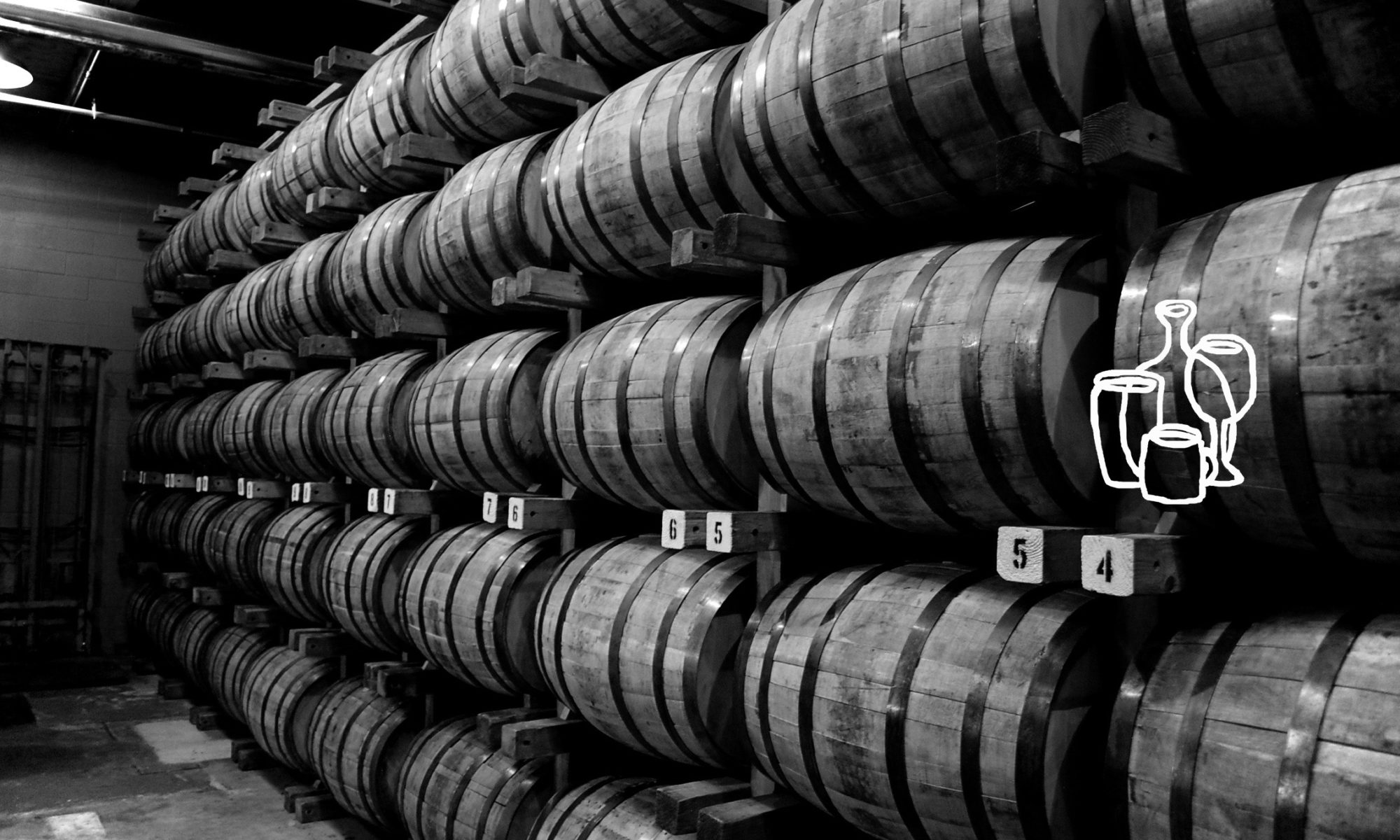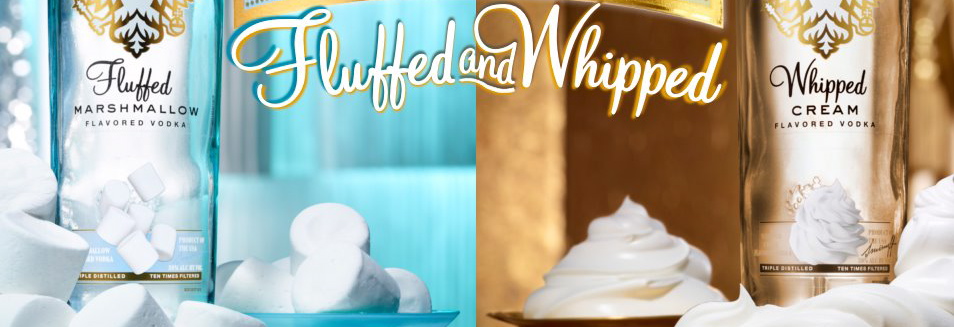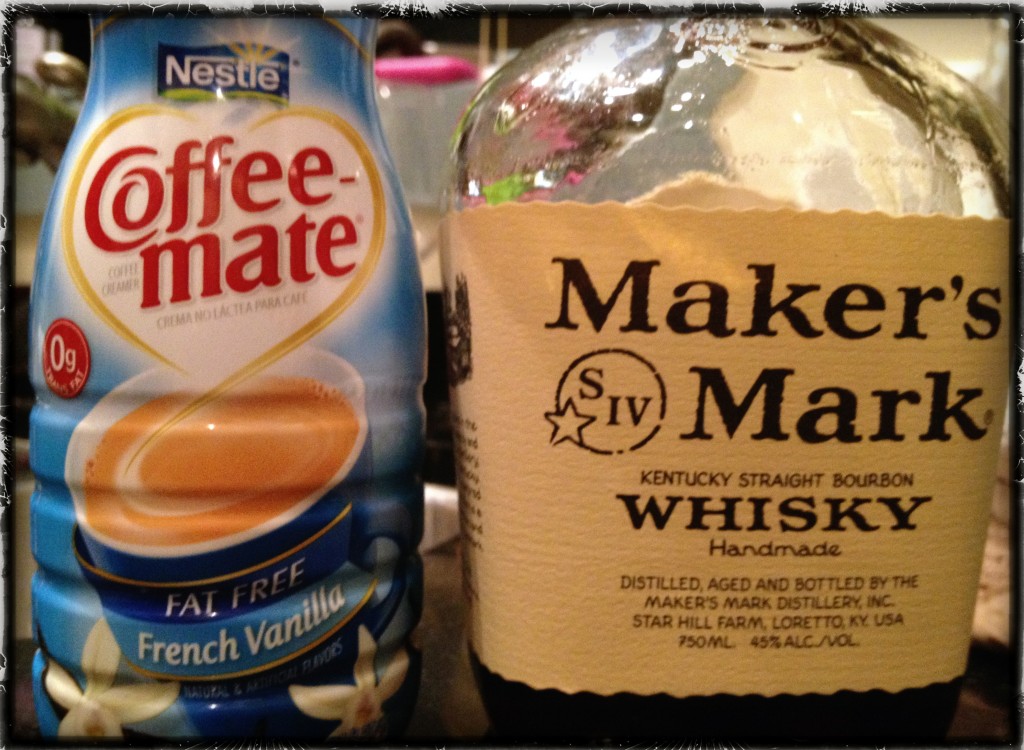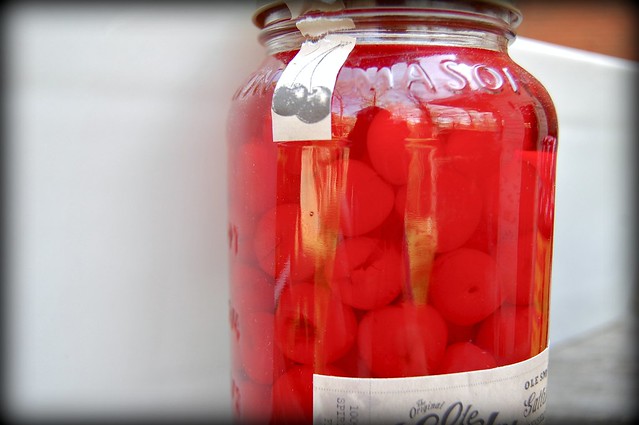
Note: This was written in 2012. Cathead has improved their Honeysuckle Vodka since.
I dig Cathead Vodka. I like the outsider art craftiness of the somewhat menacing looking cat on the bottle. I like the little-bitty blue cat heads on the backside of the back label that are visible through the clear spirit. I like that they “support live music!”(who wouldn’t?). I like that they’re from Mississippi and are doing something good in that state that could use more good things (tamales are my favorite very good thing from Mississippi). And I also like that they are the first company to attempt a honeysuckle flavored vodka.
 For sons and daughters of the South, there are few memories of youth as fine as that of discovering a good honeysuckle patch and having an older sibling or friend or parent show you the precious prize that rests within each little flower. You mean there’s more to that messy bush of tiny flowers than just an intoxicating aroma? Then you try one – plucking a honeysuckle flower off the vine, carefully clipping off the end and pulling the stamen on through the flower, hoping and praying that your bit of effort results in a big blob of honeysuckle nectar, then seeing that drop emerge on the end of the string and dipping it onto your tongue. Ahhh, a too tiny touch of heaven. You can see why I might be excited at the prospect of a good honeysuckle flavored spirit – the mystical honeysuckle is engrained in my memories.
For sons and daughters of the South, there are few memories of youth as fine as that of discovering a good honeysuckle patch and having an older sibling or friend or parent show you the precious prize that rests within each little flower. You mean there’s more to that messy bush of tiny flowers than just an intoxicating aroma? Then you try one – plucking a honeysuckle flower off the vine, carefully clipping off the end and pulling the stamen on through the flower, hoping and praying that your bit of effort results in a big blob of honeysuckle nectar, then seeing that drop emerge on the end of the string and dipping it onto your tongue. Ahhh, a too tiny touch of heaven. You can see why I might be excited at the prospect of a good honeysuckle flavored spirit – the mystical honeysuckle is engrained in my memories.
And I had reason for hope, too, knowing that Cathead Vodka makes a good Southern product, having purchased a bottle of their regular vodka a few months ago at H&F Bottle Shop here in Atlanta. Well, the Cathead Honeysuckle is now hitting store shelves. The company was kind enough to share a bottle with me for tasting purposes.
The first thing I noticed was that the label sports a smaller cathead, now in gold, missing its eyes and nose and mouth. And I do miss those features, the angry air they lent its older brother cat. The Honeysuckle clocks in at 70 proof, a notch below the standard Cathead Vodka’s 80 proof, so you can say there’s more missing than just the eyes and nose and mouth. So how does it taste? Has Cathead been able to put the essence of springtime in the South into a bottle of vodka?
Let us see. On to the tasting notes:
 Cathead Honeysuckle Flavored Vodka
Cathead Honeysuckle Flavored Vodka
70 Proof
Approx. $20 Retail
My hopes for magic in a bottle are dashed as soon as I sniff this. At 70 proof, the nose is amazingly like rubbing alcohol, cheap vodka, something you might have turned down back in college. Yes, there is some honeysuckle in there, but it’s buried so deep under fumes and a bandaid plasticity you don’t want to look for it. On the palate, layers of sharp burn and cloying sweetness duke it out, with none of the delicate beauty that honeysuckle should display. There’s also a literal lip-tingly burn to it.
 The fact that Cathead’s regular vodka is so nice makes this all the more confounding. And the Honeysuckle is just 70 proof? Cathead was on to something when they lowered the alcohol in the Honeysuckle, but they didn’t go far enough if they want anyone to enjoy this out of the bottle. And maybe that’s the point – this cries out for mixing, but it didn’t have to be so.
The fact that Cathead’s regular vodka is so nice makes this all the more confounding. And the Honeysuckle is just 70 proof? Cathead was on to something when they lowered the alcohol in the Honeysuckle, but they didn’t go far enough if they want anyone to enjoy this out of the bottle. And maybe that’s the point – this cries out for mixing, but it didn’t have to be so.
Sure enough, when a good bit of water is added, the alcohol heat is washed away, kind of like the cool that comes after a storm. The delicate floral notes start to emerge more seamlessly. It even turns into a decent sipper, smooth and clean, with a small amount of sharp sweetness that isn’t quite in the league of honeysuckle, but pleasant nonetheless. There’s plenty of room to use this in cocktails, with pineapple juice sounds nice, or even some dry vermouth in larger than normal proportion to the vodka. But does it capture the pleasure of honeysuckle like sweet tea vodka does for sweet tea? Not even close.
I hate to put out a bad review. Especially on a brand I like. (Thankfully) I doubt they’ll lose any sales because of this, but Cathead Honeysuckle just doesn’t cut it. Hopefully they can improve upon the formula – I’m still eager for a spirit that does honeysuckle right. Verdict? Avoid. If you’re looking for something with a lovely floral profile not unlike honeysuckle that will work great in cocktails, check out St. Germain elderflower liqueur. Or, better yet, head down to your local honeysuckle bush and have at it!
*******************************
* Thirsty South Rating Scale:
Wow – among the very best: knock-your-socks-off, profound, complex liquid gold!
Excellent – exceptional in quality and character, worth seeking out, highly recommended
Good Stuff – solid expression of its type/varietal, enjoyable and recommended
Fair – fairly standard or exhibiting obvious though minor flaws
Avoid – move away folks, nothing to see here, a trainwreck
Full Disclosure: Bottle provided as tasting sample for this review.



 Now, unaged does not mean “without character,” but the character of an unaged whiskey is inherently very different than one that’s been sitting in oak for years. The unaged whiskies I’ve tried have ranged from undrinkable to truly fantastic. At the truly fantastic end of the spectrum is the
Now, unaged does not mean “without character,” but the character of an unaged whiskey is inherently very different than one that’s been sitting in oak for years. The unaged whiskies I’ve tried have ranged from undrinkable to truly fantastic. At the truly fantastic end of the spectrum is the  American Spirit Whiskey
American Spirit Whiskey Troy & Sons Distillers Small Batch Moonshine
Troy & Sons Distillers Small Batch Moonshine





 While many folks obsess over which rye whiskey and which sweet vermouth make the most magical
While many folks obsess over which rye whiskey and which sweet vermouth make the most magical  I love cherries. I really do. Especially the ones you can buy on the side of the road in the heat of summer, in places where they actually grow cherry trees. There’s nothing quite like the joy of spitting out cherry seeds at sixty miles an hour as you cruise down a country highway – except maybe the joy of reaching the end of a good Manhattan and finding a perfectly delicious Maraschino cherry waiting for you at the bottom of the glass. In the name of cocktail science, I undertook a taste test of three different cherries – the classic Luxardo Maraschino, an American take on this classic by H&F Bottle Shop in Atlanta (but using Balaton cherries from Michigan), and a Southern-fried “moonshine” version from Ole Smoky Distillery in Tennessee.
I love cherries. I really do. Especially the ones you can buy on the side of the road in the heat of summer, in places where they actually grow cherry trees. There’s nothing quite like the joy of spitting out cherry seeds at sixty miles an hour as you cruise down a country highway – except maybe the joy of reaching the end of a good Manhattan and finding a perfectly delicious Maraschino cherry waiting for you at the bottom of the glass. In the name of cocktail science, I undertook a taste test of three different cherries – the classic Luxardo Maraschino, an American take on this classic by H&F Bottle Shop in Atlanta (but using Balaton cherries from Michigan), and a Southern-fried “moonshine” version from Ole Smoky Distillery in Tennessee. Let’s start with the original,
Let’s start with the original, 


